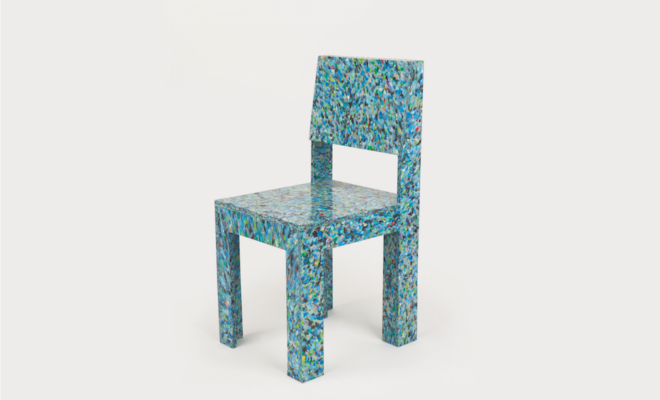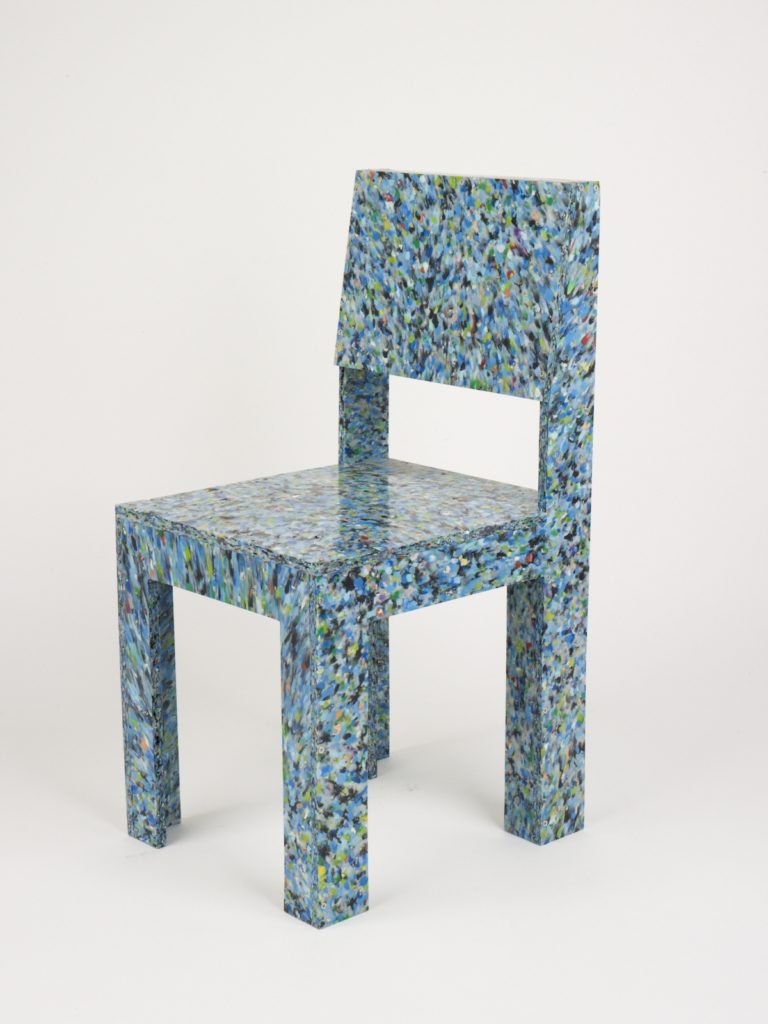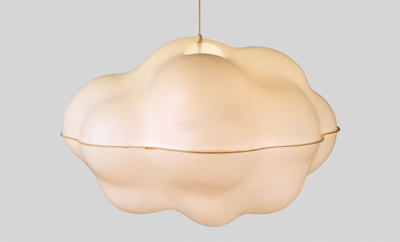 © DESIGN MUSEUM, LONDON
© DESIGN MUSEUM, LONDON
Design
Curator’s Eye: RCP2 Chair by Jane Atfield
The chair’s simplicity belies the way in which it simultaneously demonstrates an interest in new manufacturing technologies and raises questions about the way we live
JANE ATFIELD’S RCP2 CHAIR IS AN EVOCATIVE experiment in the nascent possibilities of recycling in design. The chair is made from multicolored sheets of high-density plastic from bottles that once contained shampoo, dishwashing liquid, or yogurt. The bottles were collected in community recycling schemes, cleaned, and then finely broken up into small chips. The chips were heated up and fused together to create the large sheets of speckled plastic. Basic shapes were cut from the sheet, and screwed together to make the chair. The brittle nature of the recycled material contributes much to the chair’s abstract form; more complicated tooling than straightforward cuts and joins would almost certainly result in breakage.
The chair’s simplicity belies the way in which it simultaneously demonstrates an interest in new manufacturing technologies (i.e., recycling) and raises questions about the way we live—in this case, the environmental consequences of plastic waste. A close inspection of the RCP2 chair’s flecked surface reveals tiny fragments of the labels, barcodes, and stickers that once adorned the plastic bottles. Despite the cleaning, heating, and chipping processes, the evidence of consumer detritus remains.

RCP2 Chair by Jane Atfield (1964–). Manufactured by Made of Waste, recycled high-density polyethylene board, 1993. © DESIGN MUSEUM, LONDON
At the time it was produced, the raw and unfinished nature of Atfield’s chair was seen as daring, perhaps even confrontational. However, it was only ever meant to encourage others to consider the use of recycled material, not to propose a solution for replacing the millions of chairs made from new plastic every year. In the years since the production of Atfield’s chair, designers have investigated numerous alternatives to the use of virgin materials, or, to use architect and leader in sustainable development William McDonough’s phrase, to offer new paradigms for “remaking the way we make things.” Today, the cradle-to-cradle approach (a phrase popularized by McDonough) to plastics is increasingly being adopted by mainstream manufacturers such as Herman Miller, which has developed a range of office chairs that are designed to be broken down into components that can be easily recycled. Despite such solutions, ecological uncertainty continues to be one of the global risks of our era. For this reason, the RCP2 Chair continues to resonate as a call to reconsider our use of plastics today.
Tom Wilson
Head of Collection and Research
Design Museum
London, England












